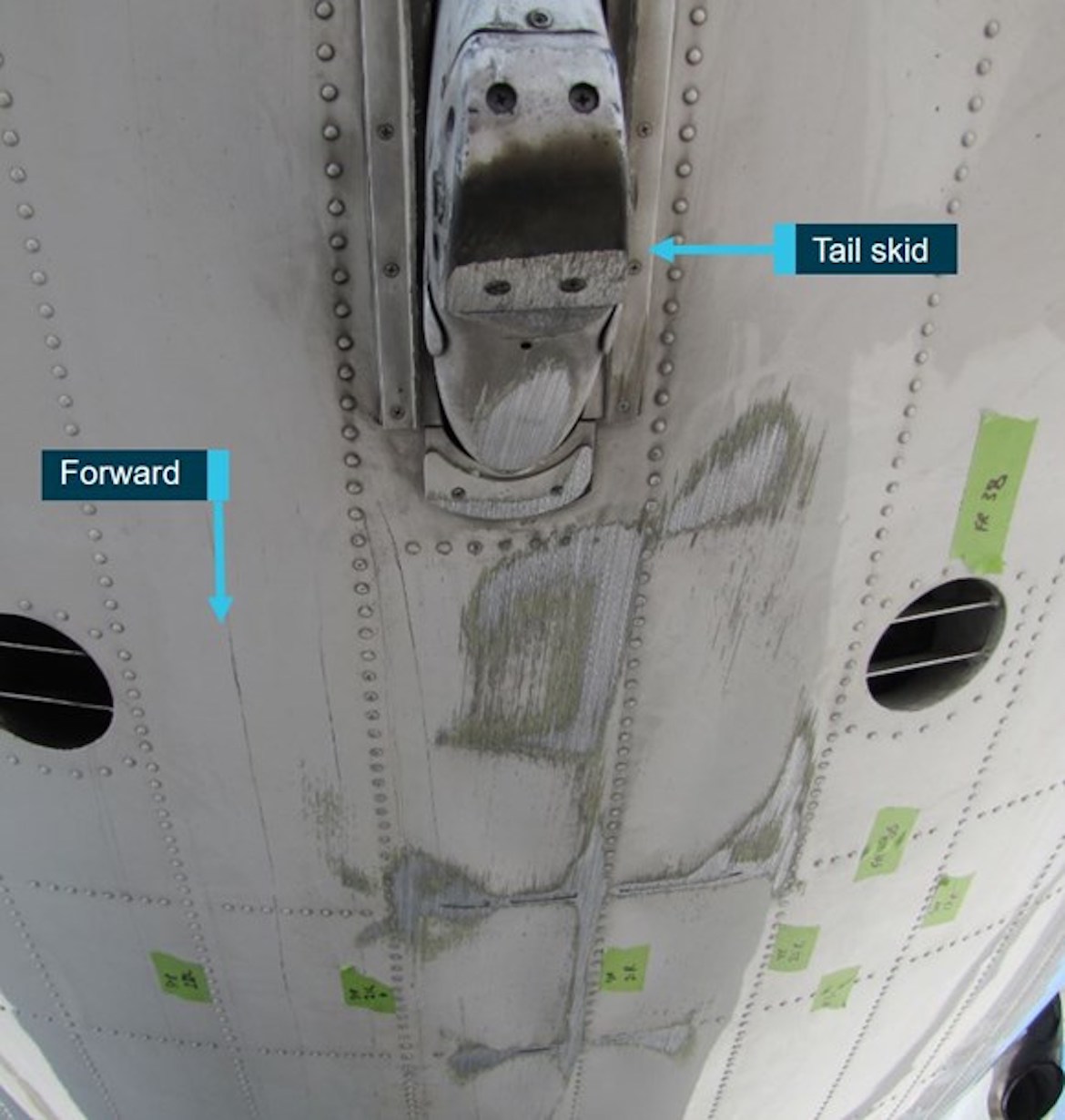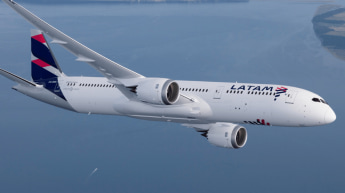
A Virgin Australia ATR 72-600 suffered substantial damage after a hard landing when pilots did not recognise an unstable approach, an investigation has found.
The Australian Transport Safety Bureau (ATSB) has published its final report into the November 19 2017 incident involving flight VA 646 from Sydney to Canberra, operated by ATR 72-600 VH-FVZ, with 67 passengers on board alongside two cabin crew and three pilots – a Captain, First Officer and check Captain in the observer seat conducting an annual line check of the Captain and a six-month line check of the First Officer.
The final report, published on Tuesday, said the the flight crew was conducting a visual approach for landing on Canberra Airport’s Runway 35 and had calculated a target approach speed of 113kt, with an expected landing weight of 21,600kg.
The First Officer, who was the pilot flying (PF), advised the Captain that due to the heavy aircraft weight and the possibility of a tailwind during the approach, he would “slow the aircraft earlier than normal to ensure the approach commenced at the target speed”.
At about 400ft above the airport elevation, the First Officer disconnected the autopilot and began flying the aircraft manually.
There was some light turbulence as the aircraft descended through 265ft, which led to a reduction in speed. In response, the First Officer increased power.
Then, as the aircraft descended through 193ft, the turbulent conditions combined with the increased power setting led to a further increase in speed.
“Eight seconds later, the speed had increased to 127 kt – 4kt above the stabilised approach criteria upper limit,” the ATSB final report said.
The First Officer did not recognise the speed had exceeded what was required for a stabilised approach, the ATSB final report said. Instead, he reduced the engine power to idle after assessing the presence of overshoot wind shear.
“The selection of idle power at that stage of the approach also did not comply with a further stabilised approach criteria requirement,” the ATSB final report said.
“As a result of the power reduction, the descent rate increased and the speed reduced.”
Later, at about five seconds prior to touchdown, the Captain, who was the pilot monitoring (PM), called on the First Officer to “ease on a bit” of power. This did not occur.
At 50ft above the runway, the aircraft’s descent rate was recorded at 784ft per minute, which the ATSB final report said was above the normal descent rate for the approach of about 575ft per minute.
The descent rate then increased further when the aircraft encountered a wind shift.
In response, the Captain “manually intervened by advancing the power levers slightly, increasing power on both engines from 1.5 per cent torque to three per cent torque”.
“Two seconds later, anticipating a bounced landing, the PM instructed the PF to commence a go-around. However, almost immediately the aircraft touched down at a normal pitch attitude, but heavily on the main landing gear, tail skid and underside of the rear fuselage,” the ATSB final report said.
“The aircraft did not bounce and the PM cancelled the go-around, took control and completed the landing roll.”
There were no injuries.
The flight data recorder showed the turboprop reached a descent rate of 928ft per minute at touchdown, that resulted in a 2.97G hard landing on the main landing gear, tail skid and underside of the rear fuselage.
“The flight crew did not recognise the unstable approach,” the ATSB final report said.

ATSB executive director for transport safety Nat Nagy said a go-around should have been conducted rather than allowing the subsequent conditions to develop, leading to the hard landing.
“This occurrence demonstrates the importance of crews adhering to standard operating procedures and conducting a go-around when an approach becomes unstable,” Nagy said in a statement.
“It also highlights the risks associated with incorrect handling of an approach to land, and the need for prompt and decisive action, as the available time to remedy an unstable approach situation is short.”
Further, Nagy noted unstable approaches were a leading contributor to approach and landing accidents and runway excursions.

A technical examination of the aircraft showed the turboprop had sustained impact and abrasion damage to the tail skid and the underside of the rear fuselage forward of the tail skid.
“Analysis of the loads sustained by the nose and left main landing gear determined that these were below certification limits and the assemblies were returned to service,” the ATSB final report said.
“The loads sustained by the right main landing gear were above certification limits, this assembly was subject to a stress analysis and assessment prior to being returned to service.”
The ATSB final report said Virgin Australia had “strengthened its guidance on the effects of sustained low power settings during approach and landing and the importance of avoiding that situation”.
These aspects had also been reinforced in training.
“The operator also added additional criteria to its operational monitoring program to detect instances of low power settings at low level,” the ATSB final report said.
The full report can be read on the ATSB website.















